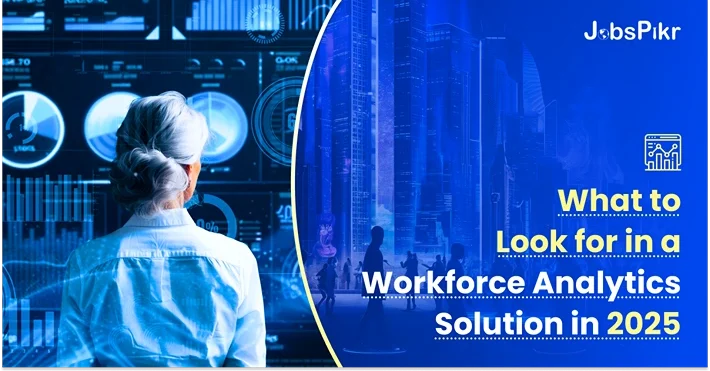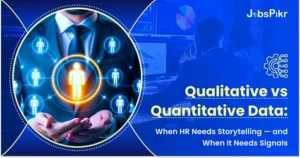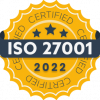-
Criteria to Select a Workforce Analytics Solution
- 1. AI That Supports Human Intelligence
- 2. Strong Security That Doesn't Inhibit Productivity
- 3. Integration Across Your Tech Stack
- 4. Real-Time Insights That Enable Immediate Action
- 5. A User Interface Designed for Accessibility
- 6. Scalable Workforce Analytics Solution That Keeps Up with Business Growth
- 7. Ethical AI Practices and Transparency
- 8. Ability to Understand Context, Not Just Data
- 9. A Vendor That Acts as a Strategic Partner
- 10. Pricing That Aligns with Value
- Data That Serves People, Not the Other Way Around
As the workplace continues to evolve, organizations are under pressure to make faster, more informed decisions about their people. In 2025, workforce analytics solutions will not be 1an optional ‘nice to have’ secondary HR function but a critical aspect of any proper business strategy.
From managing remote teams to preparing for AI-driven changes in work, leaders need tools that go beyond reporting and deliver insight at the moment it matters most.
But with a growing number of platforms available, identifying the right solution can be challenging. Below are ten essential criteria to consider when evaluating workforce analytics platforms this year.
Criteria to Select a Workforce Analytics Solution
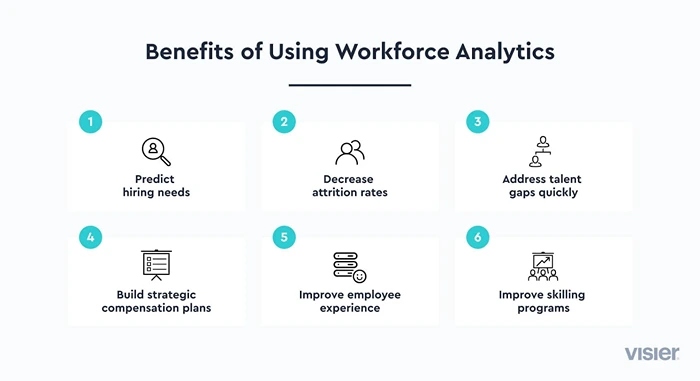
Image Source: Visier
Here are some must-knows for businesses looking to adopt a workforce analytics solution –
1. AI That Supports Human Intelligence
AI is now deeply embedded in most advanced workforce analytics platforms. However, the real value lies in how the system complements human decision-making, rather than trying to automate it entirely.
The most effective solutions use AI to identify patterns and provide recommendations in areas like engagement, retention, productivity, and skill development. More advanced systems can also detect subtle behavioral shifts—missed deadlines, quiet withdrawal from team chats, or a sudden drop in collaboration—that might signal burnout or disengagement.
A critical component to look for is explainability. If a tool flags a team or employee as “at risk,” HR teams need to understand the logic behind that suggestion. Transparency in AI models builds trust and helps decision-makers take action with confidence.
A healthcare client I worked with recently experienced a serious oversight in this area. Their analytics system, while sophisticated on the surface, misclassified a group of experienced nurses as low-risk for turnover. Within three months, nearly a third of them had resigned. Upon review, the system failed to account for emotional strain caused by high patient loss rates, a factor not easily captured in numerical performance data.
2. Strong Security That Doesn’t Inhibit Productivity
Security remains a top concern for organizations handling large volumes of sensitive employee data. Workforce analytics platforms must include enterprise-grade encryption, secure user authentication, and fine-grained access controls.
Features to prioritize:
- End-to-end encryption (both in transit and at rest)
- Role-based access ensures employees only see relevant data
- Data lifecycle management, including the ability to automatically delete or anonymize outdated records
However, strong security must be balanced with usability. Some platforms sacrifice efficiency in pursuit of airtight protection. When systems become difficult to navigate due to multi-step logins or overly rigid controls, adoption suffers. Choose a platform that offers a secure design without hindering day-to-day operations.
3. Integration Across Your Tech Stack
In a typical organization, HR data rarely lives in a single system. You might have payroll handled by one provider, collaboration data in Slack or Teams, and performance reviews tracked in a separate tool.
A good workforce analytics solution must integrate seamlessly across systems, both modern SaaS platforms and legacy applications. Look for:
- API availability and flexibility
Pre-built integrations with common tools (e.g., Microsoft 365, Workday, SAP) - Compatibility with wearables or IoT data (e.g., biometric or environmental sensors)
One example: A manufacturing client integrated their analytics system with data from factory-floor sensors. They discovered an unexpected correlation between machinery noise levels and productivity, leading them to adjust scheduling for quieter work periods. These are the kinds of insights that become possible when your data sources can “speak” to each other.
4. Real-Time Insights That Enable Immediate Action
In 2025, the expectation is no longer to wait days—or even hours—for workforce reports. The best tools offer real-time or near-real-time dashboards that allow managers to respond instantly to engagement shifts, performance risks, or team imbalances.
Capabilities worth considering:
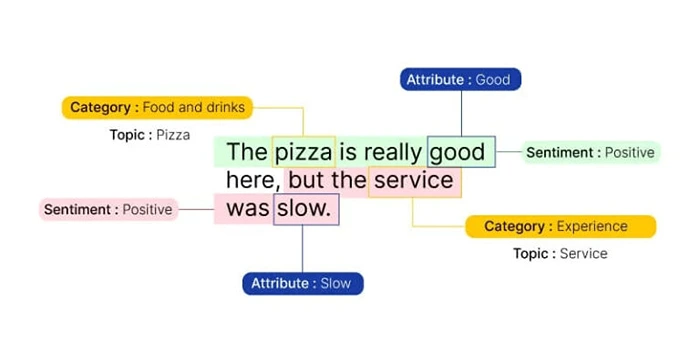
- Sentiment analysis is updated in real time during key meetings or announcements
- Automated skill gap alerts when project demands change
- Personalized nudges or suggestions based on current trends (e.g., recognizing a high-performing team)
Still, real-time insights are only helpful if they are clear and prioritized. Beware of platforms that provide a flood of data with no filtering. A smart system highlights what matters most and minimizes distractions.
5. A User Interface Designed for Accessibility
No matter how powerful an analytics tool is, it must be easy to use. If navigating the platform feels overwhelming or requires specialized training, it will limit adoption across your organization.
Key features to look for include:
- Natural language queries or voice search
- Drag-and-drop reporting tools that don’t require coding skills
- Mobile access with full feature parity
Make sure to test the platform with both HR professionals and non-technical users before committing. A system that’s intuitive for frontline managers is more likely to be integrated into daily decision-making.
6. Scalable Workforce Analytics Solution That Keeps Up with Business Growth
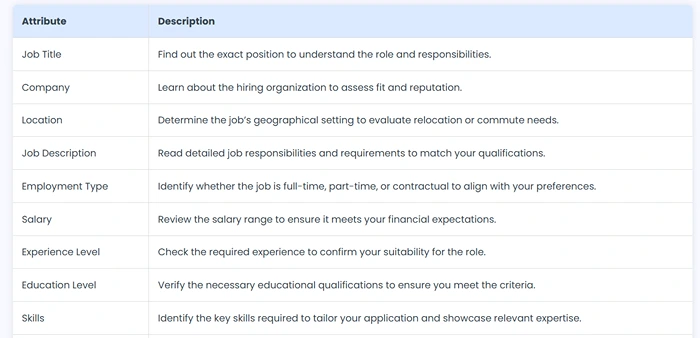
As your workforce expands—geographically, functionally, or structurally—your analytics platform must be able to grow alongside it. Scalability isn’t only about data volume. It includes the ability to adapt to multiple business models, employment types, and regions.
Ask the following:
- Can the system handle data from full-time employees, contractors, and gig workers equally?
- Is pricing predictable as the organization grows?
- Can the tool adapt to custom KPIs and evolving reporting structures?
Failing to plan for scale can be costly. I’ve worked with companies that initially selected smaller platforms based on low upfront costs, only to outgrow them within a year and face expensive transitions to more robust systems.
7. Ethical AI Practices and Transparency
As reliance on AI grows, so do concerns around bias, accountability, and privacy. Organizations must ensure the tools they use operate under ethical guidelines and allow for human oversight.
Look for the following features:
- Third-party audits of algorithms to ensure fairness
- Clear audit trails and the ability to review or override automated decisions
- Transparency with employees about what data is being collected and how it is used
For example, one retail company used an AI-driven model to evaluate promotion potential. The model unintentionally favored extroverted behavior, which led to the underrepresentation of quieter, equally capable individuals, including those who were neurodivergent. Avoiding these pitfalls requires ethical design, diverse training data, and human judgment.
8. Ability to Understand Context, Not Just Data
Numbers alone don’t tell the full story. High-performing workforce analytics platforms include tools that detect context, whether it’s behavioral shifts, communication tone, or changes in work habits.
This can include:
- Analysis of meeting dynamics (e.g., tone in virtual meetings)
- Identification of disengagement signals (e.g., increased meeting declines or late responses)
- Aggregated behavioral trends to detect systemic issues
These insights can help identify quiet quitting, early burnout, or cultural misalignment before they show up in performance reviews. However, it’s essential to approach this kind of monitoring with transparency and employee consent. Trust must remain at the core of any analytics strategy.
9. A Vendor That Acts as a Strategic Partner
Support matters—both at the beginning of implementation and throughout the lifecycle of your analytics program. You’re not just buying software; you’re entering a long-term relationship.
A strong vendor should offer:
- Dedicated onboarding and success managers
- Fast and knowledgeable support response
- Regular product updates and a clear roadmap
- Customization or configuration support for your industry
Additionally, see if the vendor hosts user communities, training webinars, or invites customers to co-develop new features. This type of engagement signals a long-term commitment to improving the product and meeting real-world needs.
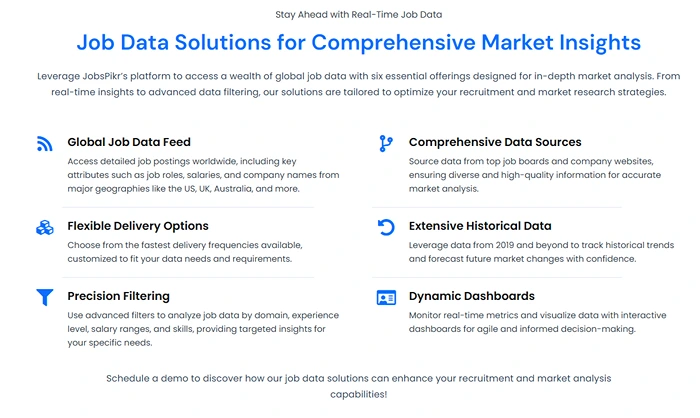
Pro Tip: JobsPikr provides all the above, allowing businesses to get the right data promptly at their fingertips.
10. Pricing That Aligns with Value
Cost transparency is essential when selecting a workforce analytics solution. Some platforms charge per user, which can become cost-prohibitive as your team grows. Others bundle essential features into premium packages, driving up total ownership costs unexpectedly.
Look for:
- Predictable pricing tiers with clear descriptions of what’s included
- No hidden fees for API access, reporting, or support
- ROI-focused demos or case studies to show actual business impact
It’s helpful to ask vendors to provide specific benchmarks—for example, improvements in retention, time-to-fill, or employee engagement that their customers have achieved using the platform.
Data That Serves People, Not the Other Way Around
In a time when organizations face constant change, workforce analytics is no longer optional. But it’s not just about having data—it’s about how that data is used. The right platform will help leaders anticipate challenges, support employees more effectively, and make informed decisions without losing sight of the human side of work.
Choose a system that aligns with your values, adapts to your growth, and enhances—not replaces—the expertise of your teams. In the end, the most successful analytics tools are those that foster better understanding, better planning, and better outcomes for people.

Sign up for a free trial of JobsPikr’s intelligent workforce data platform.
